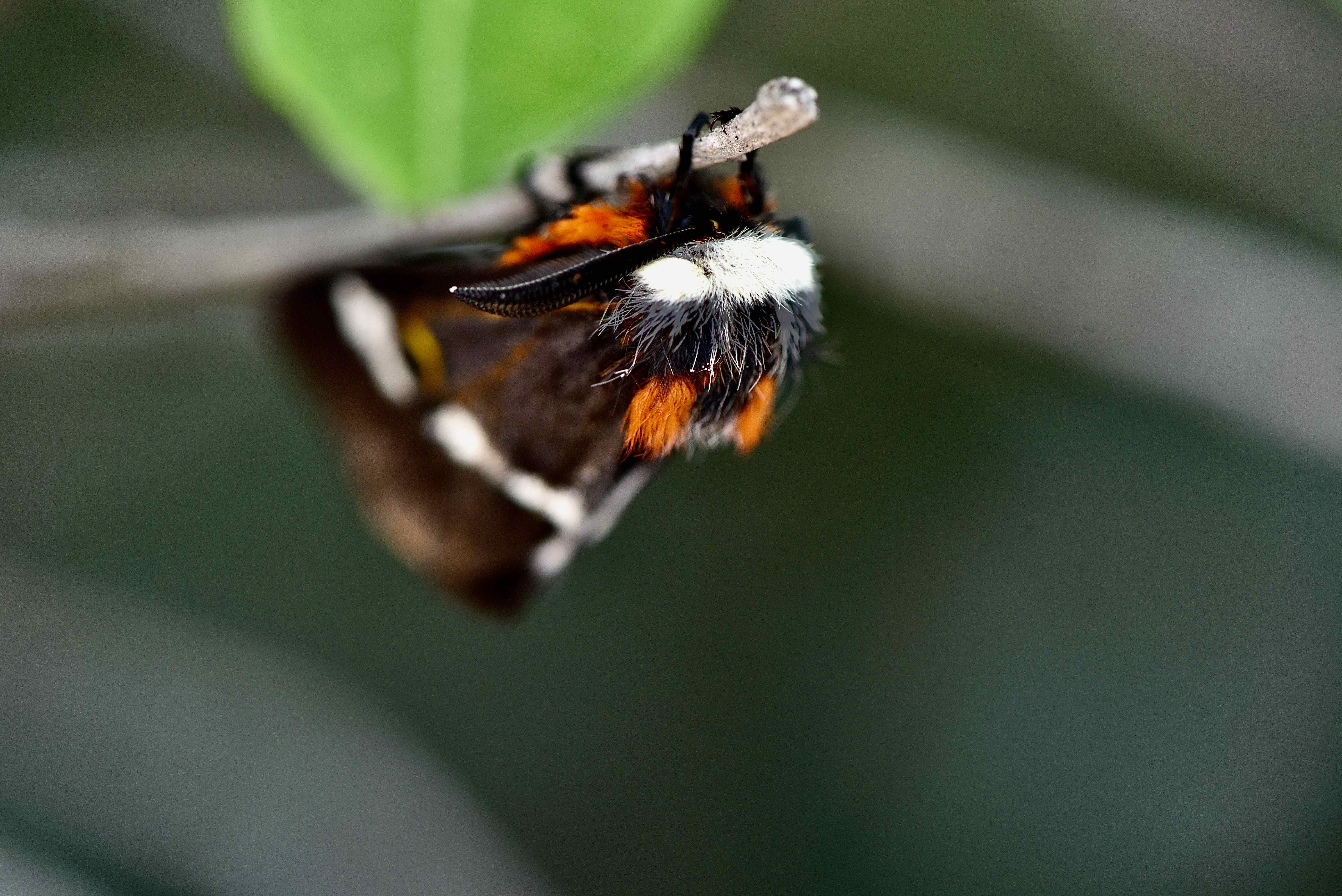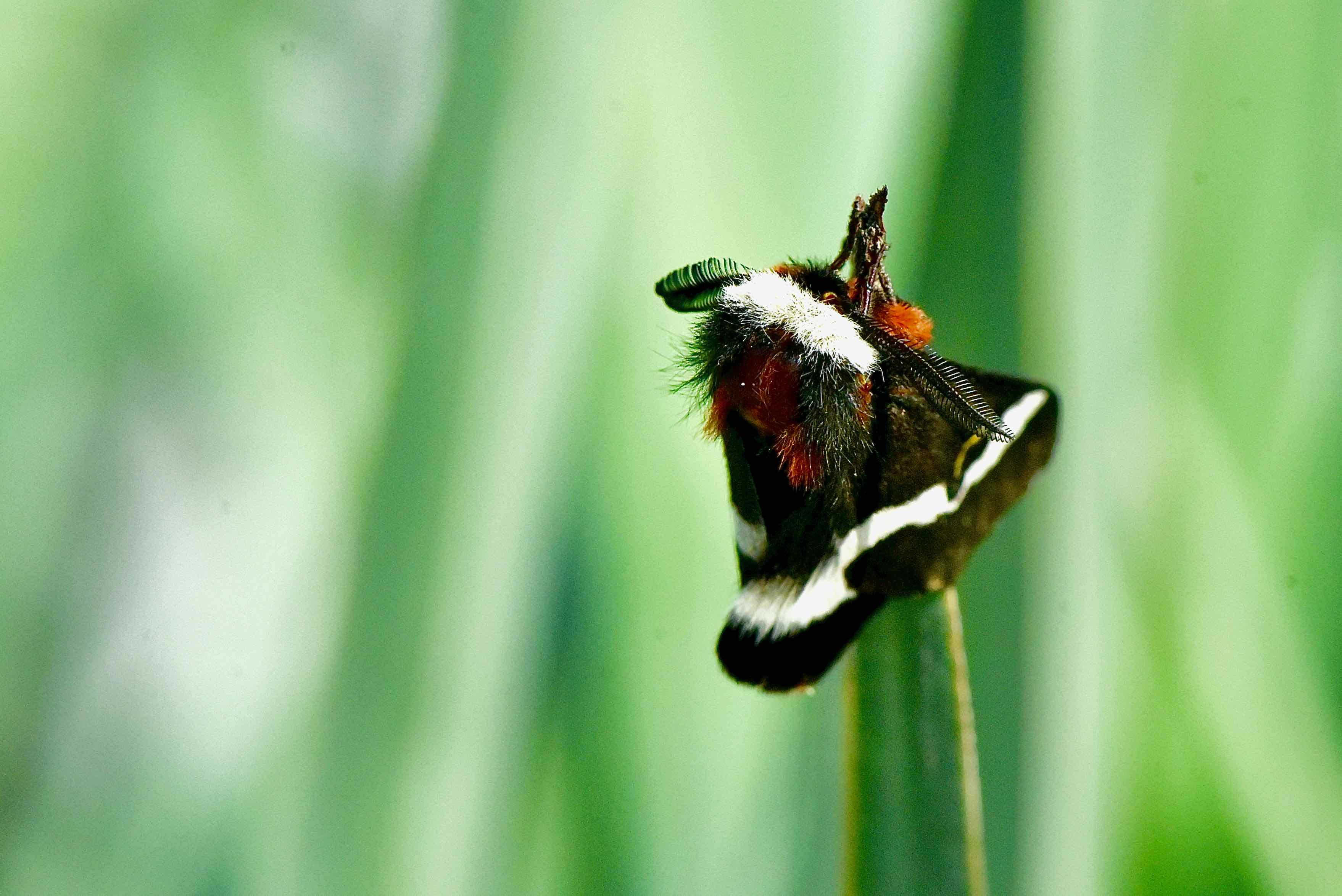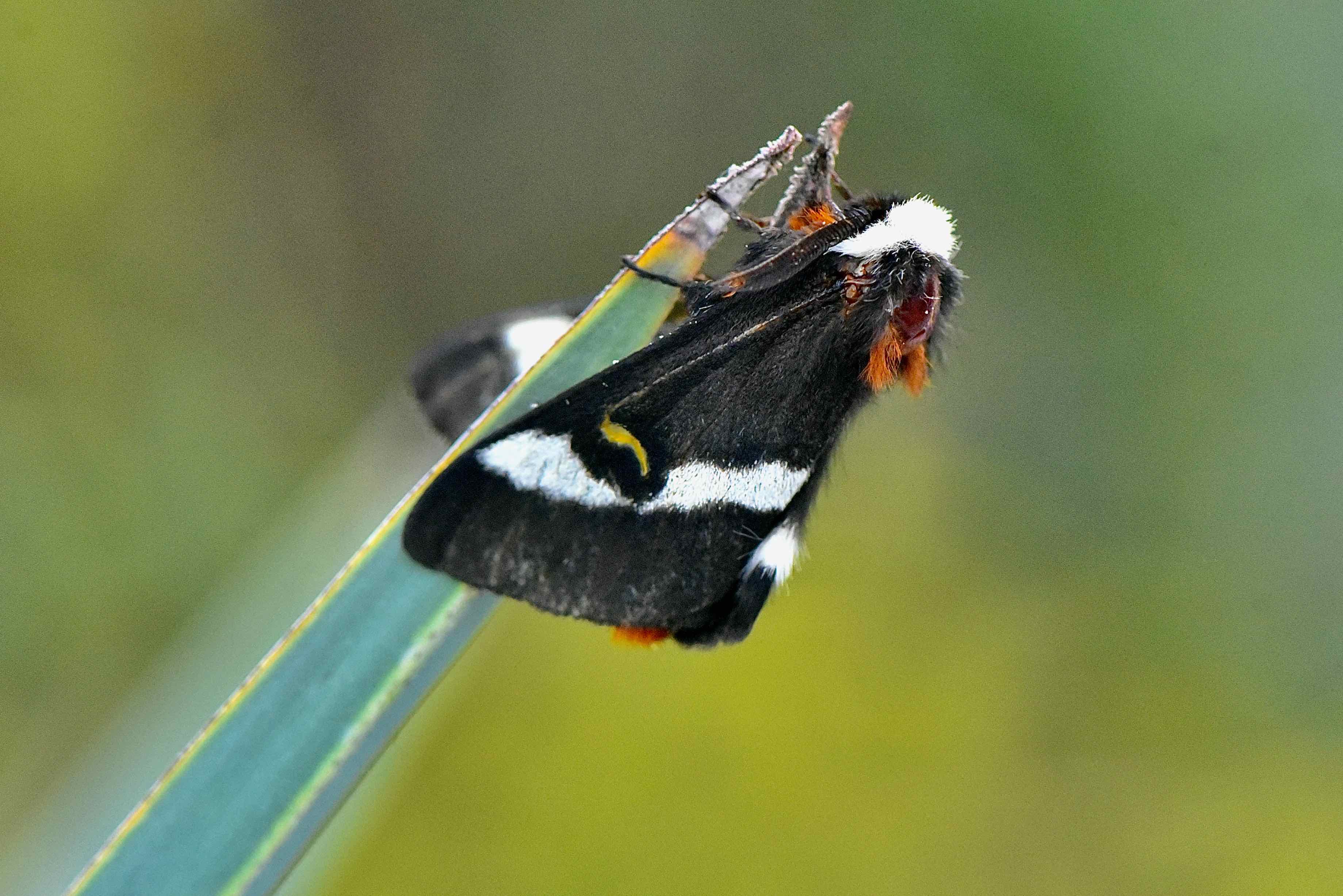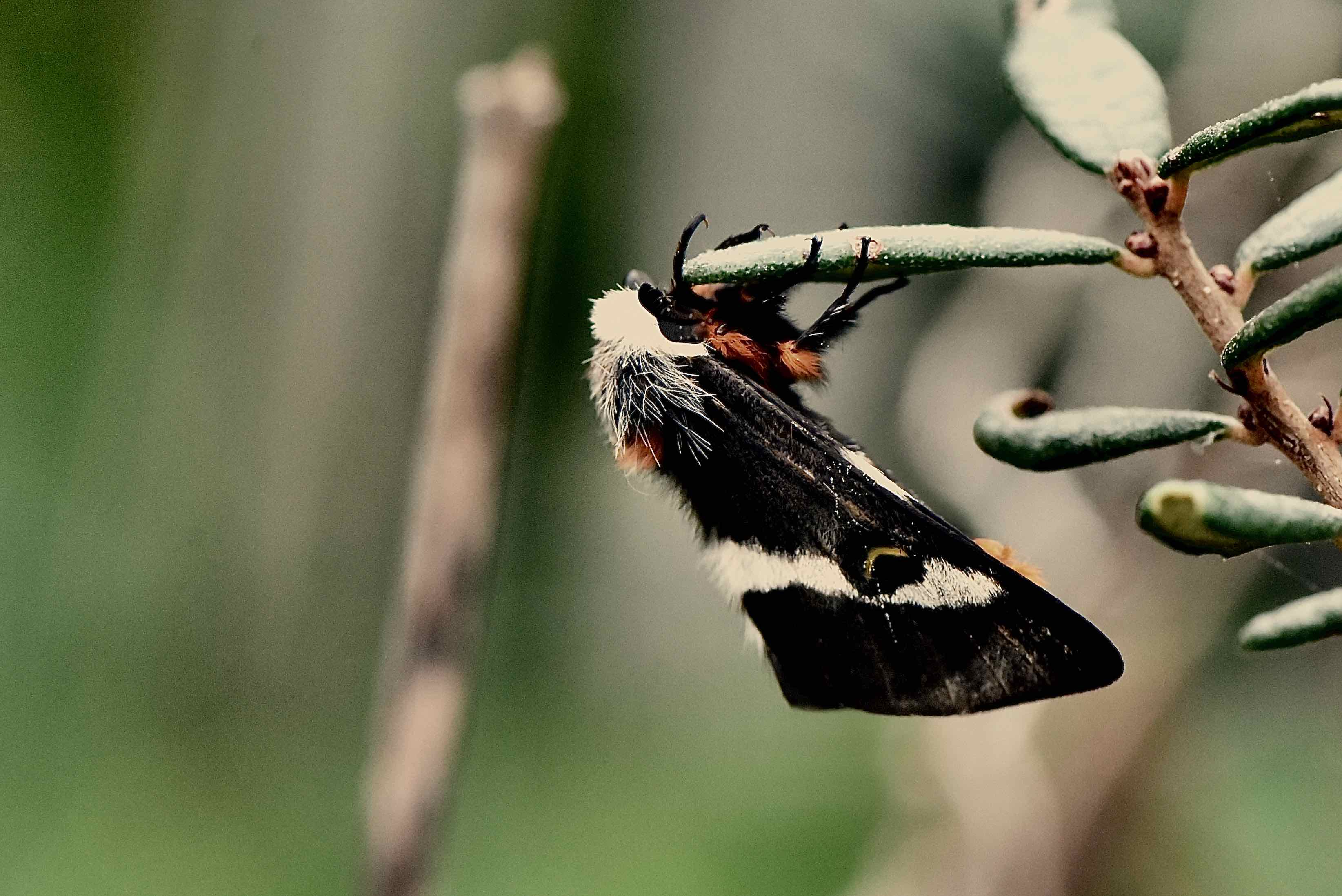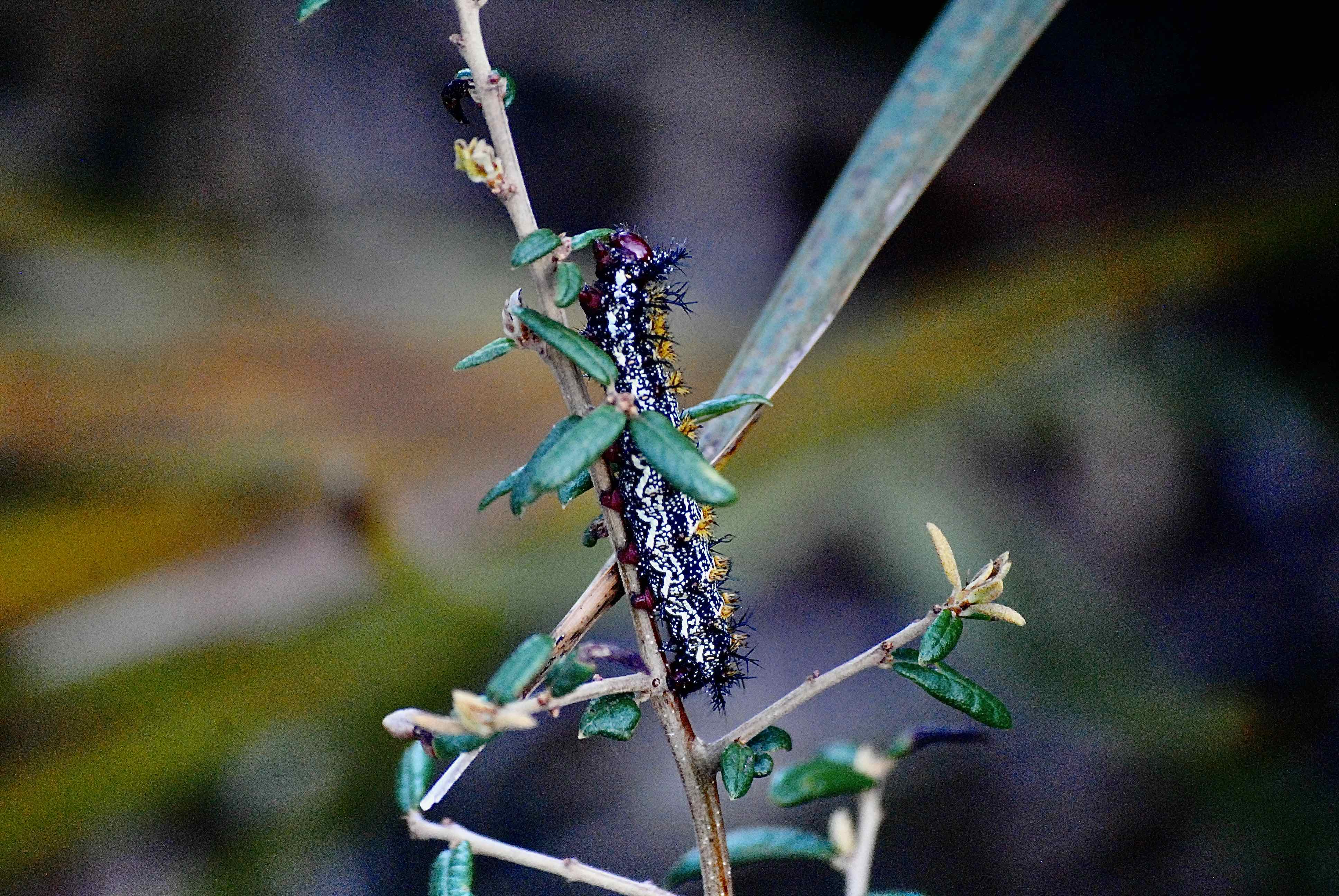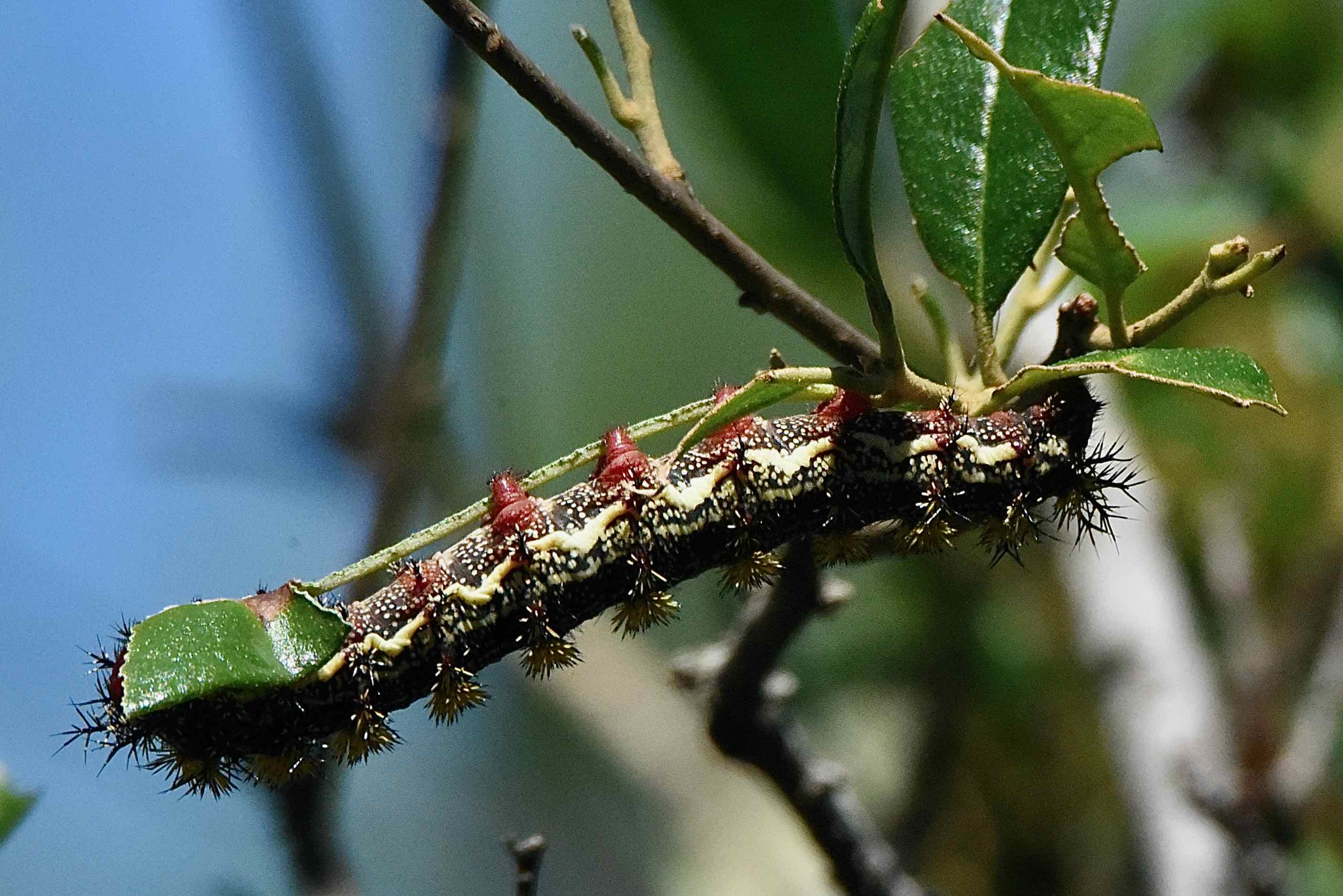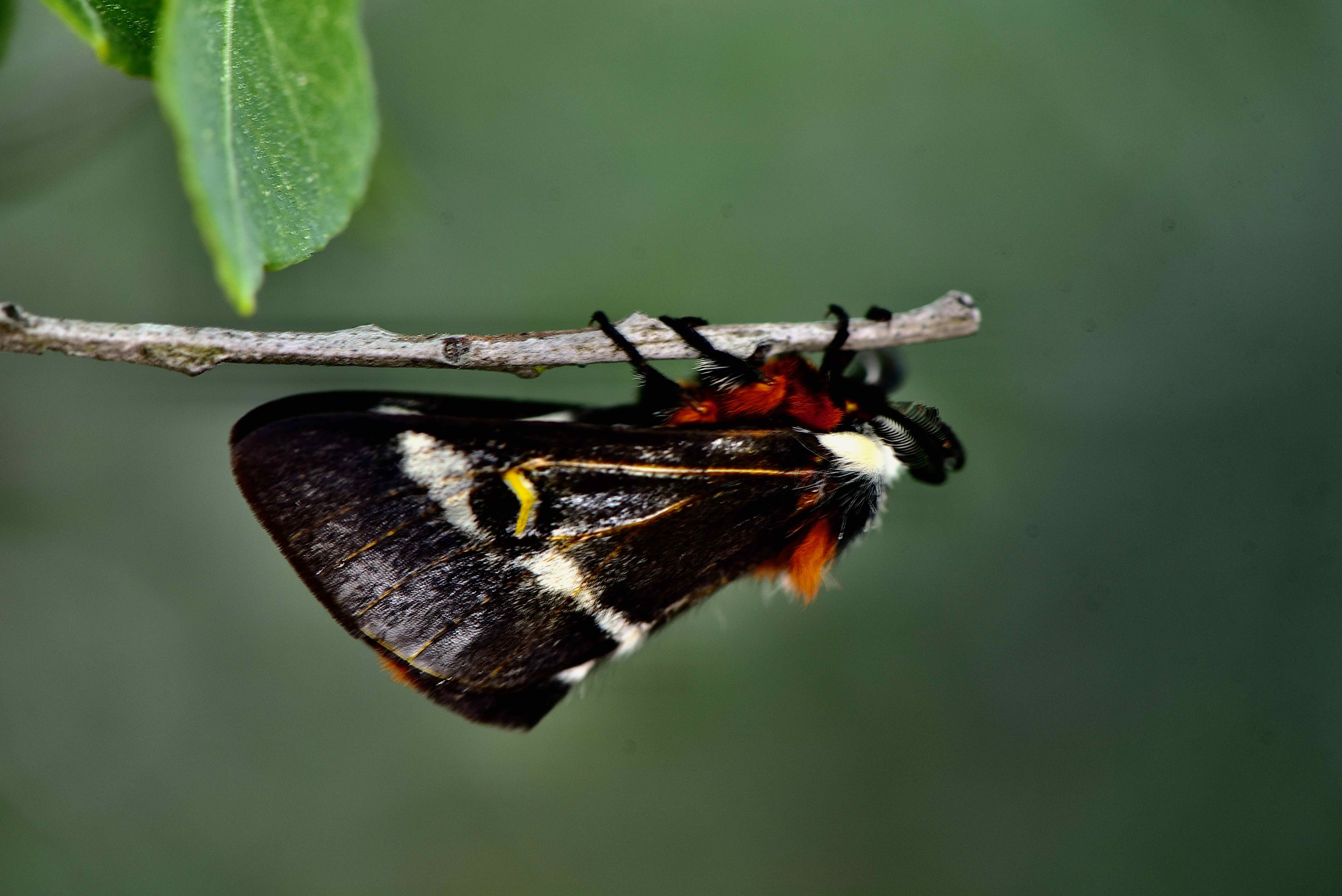
Buck moth, photographed at Blazing Star Preserve, Boca Raton, Palm Beach County, in January 2024.
The adults are harmless enough. All they want to do is flutter about and make sweet love. They don’t even stop for a bite to eat. The kids, however, do have a considerable appetite and are a bit prickly to say the least.
We’re talking about buck moths, Hemileuca maia, a Florida native, and one of the few of moths that operate during the day and sport a bit of color.
The “kids,” of course, are the larvae/caterpillars of the species, which are armed from one end to the other with spines — hardened hairs — filled with venom that, at minium, can cause a day’s worth of pain or at worst, a week’s worth of misery to anyone (or anything) that messes with them.
Buck moths are found along the Atlantic Coast as far north as Maine, south into Florida and as far west as Wisconsin, Kansas and Texas.
Prime habitats for buck moths include anyplace with an abundance of oaks — scrubs, scrubby flatwoods, oak woods and urbanized/suburbanized places with oak trees. They’re not super common in South Florida, but they’re not rare either — you can find them if you know where and when to look.
They’re medium-sized as far as moths go, with a wingspan of about two-and-a-half inches. Buck moths have a furry black head with a broad white band and two red spots. The wings are brownish gray or black, again with a broad off-white stripe across them and a brown or golden brown kidney-shaped spot on each of the forewings. Buckmoth legs are covered with bright red fur. Females are larger than males and have black abdomens; males also have black abdomens but sport a red tip.
The caterpillars are two to two-and-a-half inches long, generally black with a multitude of small white spots; they also can be white. Buck moth caterpillars also have bright red legs. And then there are those spines, making them seem like walking or crawling cacti.
Buck moths produce a single generation a year. The adults are in flight, or active, in the fall between October and November, which coincides with deer hunting season in a lot of places and is the inspiration of the name, buck moth. Buck as in buck, male deer.
Adult buck moths lack functional mouth parts, so they don’t eat; their sole interest and purpose at this point in their lives is to find mates and reproduce. Once fertilized, females will lay bead-like eggs in bands on the branches of the species’ host plants, mainly various species of oaks, including scrub oaks.
Female buck moths may lay as many as three batches of eggs.
The eggs hatch in the spring; the young buck moths begin eating away at the leaves of their hosts; they’re gregarious at first, hanging together in groups. As they age, they begin to separate and go off on their own.
Altogether, they’ll go through as many as six growth stages, or instars, before dropping to the ground to pupate, the cocoon stage. They’ll burrow into the ground if it’s soft enough; if not, they’ll make a cozzy home for themselves in the leaf litter. They’ll emerge in the fall, but not necessarily in the same year. They can remain as pupae for a year or two.
The distinctive red plumes of the buck moth provide these fuzzy bugs with a bit of protection from predators, mainly birds. Those venomous spines of the caterpillars are a formidable defense, but alone they’re not enough. A bird pecking into one isn’t going to die, but he’ll have a very unpleasant experience, one he’ll not likely repeat in his life time. The bright red of the legs will help the bird remember the pain he went through and associate the color with danger and things to be left alone. It’s the same defense that butterflies like the monarch employ. One dies, others live.
As for us humans, getting stung by a buck moth caterpillar causes immediate pain, a burning sensation, and swelling of the area. First aid includes immediately washing the area and removing any stingers from the site. A piece of tape will do the trick.
The pain usually goes away in a day or so, but can linger as long as a week in extreme cases. We’re lucky, though. Buck moths have South American cousins that have stings that can be fatal.
So what about the origins of the scientific name, Hemileuca maia? The genus name is a mashup of two Latin words: hemi, meaning half, and leuca meaning pale, referring to the buck moth’s white bands. Half pale. The species name, maia, refers to the Pleiades, the seven sisters, daughters of Atlas and Pleone of Greek mythology. Maia was the eldest and most beautiful of the sisters. She was a shy goddess, and lived alone in a cave. Maia was also the mother of the god Hermes (Zeus was the father), called Mercury, the messenger god, in Roman mythology.
Buck moths aren’t bad-looking, but we’re not sure how they measure up to the name, Maia.
Buck moths, also known as eastern buck moths, are members of Saturniidae, the royal moth and giant silkworm family.
Blazing Star Nature Preserve

